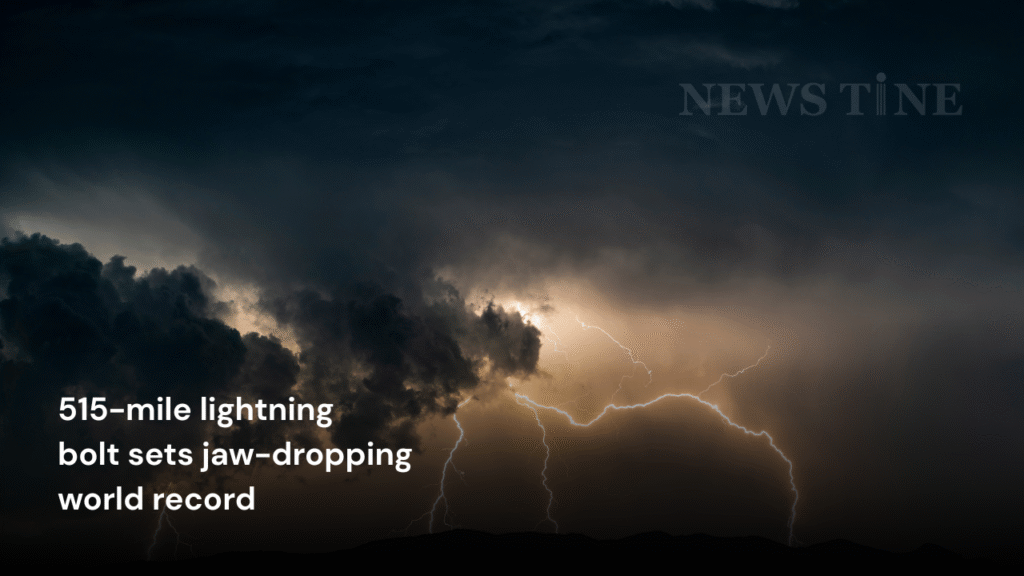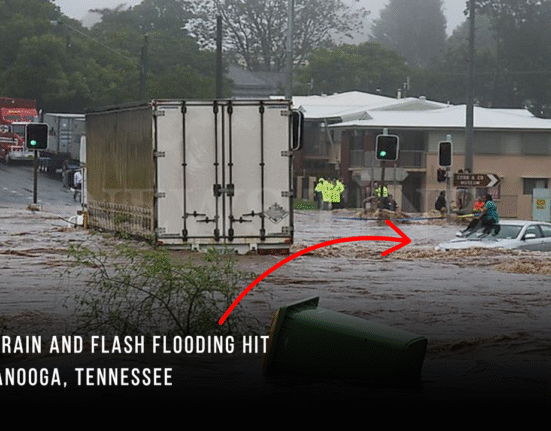
Imagine a bolt of lightning so massive it could span from New York City to Cleveland, Ohio. That’s not science fiction — it’s science fact. In a moment that shook the skies and set a world record, a single flash of lightning stretched a staggering 515 miles across the southern U.S., earning the title of the longest lightning bolt ever recorded.
This atmospheric wonder, now officially certified by the World Meteorological Organization (WMO), was spotted during a 2017 storm. But it took years and advanced satellite tech to reveal just how epic this bolt really was.
What Exactly Is a “Megaflash” Lightning Bolt?
We’re not talking about your everyday thunderstorm zap. A megaflash is an extreme form of lightning that travels extraordinary distances through the sky.
Key characteristics of megaflashes:
- Length: Can span hundreds of miles (the new record is 515 miles!)
- Altitude: Occur high in the atmosphere (up to 18,000 feet)
- Danger level: Rarely touch the ground but still pose major risks
- Location: Typically happen in storm-heavy areas like the Great Plains, Argentina, or southern France
Atmospheric scientist Michael Peterson, who led the research, described megaflashes as “electrical snakes slithering across the sky.”
The Science Behind the Record Lightning Flash
This record-breaking lightning flash occurred on October 22, 2017, during a massive storm stretching from eastern Texas to near Kansas City.
Why there?
Randall Cerveny of the WMO explains: “The Great Plains are the perfect storm kitchen. Warm, moist air from the Gulf mixes with dry, cold air from the north, and bam — you get explosive storms.”
Thanks to a new generation of lightning detection sensors aboard NOAA and NASA satellites, scientists were able to:
- Detect the start and end points of the flash
- Measure the duration and distance precisely
- Map out the bolt’s trajectory using real-time satellite data
The event was published in the Bulletin of the American Meteorological Society, sparking amazement across the scientific community.
“It’s like discovering a new species of lightning. We’re just beginning to understand these giants,” said Peterson.
How Big Is 515 Miles, Really?
To put this in perspective:
- By car: 8+ hours of highway driving
- By plane: 90-minute commercial flight
- Compared to normal lightning: Over 50 times longer than average lightning bolts
| Distance Comparison | Equivalent To |
|---|---|
| 515 miles | NYC to Cleveland |
| Standard lightning (10 miles) | Barely a few city blocks |
| Previous record (477 miles) | Broken by nearly 40 miles |
Why Lightning Megaflashes Matter
They might be rare, but megaflashes carry serious implications:
1. Aviation Safety
Planes cruising through electrified clouds could face unexpected turbulence or instrument failure.
2. Wildfire Risk
Though rare, these long bolts could still ignite fires if they touch ground.
3. Climate Clues
Studying megaflashes helps scientists understand storm behavior, climate change trends, and electrical discharges.
Celeste Saulo, WMO Secretary-General, emphasized the point: “These flashes travel incredible distances and can have serious consequences. Better monitoring improves public safety.”
Will We See Even Longer Lightning Flashes?
Experts believe this is just the beginning. With satellite technology improving, new records could emerge in the next few years.
Tools helping this discovery:
- Geostationary Lightning Mapper (GLM) on GOES satellites
- High-speed imaging
- Advanced weather radar systems
As data continues to pour in, Cerveny believes we’ll find even more mind-blowing atmospheric events:
“We’re in a golden age of weather observation. Buckle up.”
Nature Still Finds a Way to Surprise Us
As someone who’s always admired lightning from a safe distance (usually behind a window with hot cocoa), this megaflash story is both awe-inspiring and a little humbling. No matter how advanced we become, the sky still holds mysteries far beyond our reach.
So the next time you hear thunder rumbling in the distance, remember: there could be a 500-mile spark lighting up the clouds.






